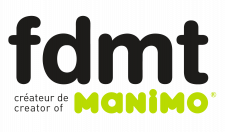Summer is over! As exciting as ‘BACK TO SCHOOL’ can be, ‘BACK TO WORK’ comes often with much less enthusiasm. To avoid the summer blues, here are some tips to make ‘HOMEWORK TIME’ an efficient and positive part of the daily schedule.
The Challenges!
During homework time, we observe Jonathan having trouble staying seated, Zoe biting her nails, Maxim touching everything, Madeleine making mouth noises and Ashley repeatedly saying « I am tired. I don’t want to work anymore ».
Concentration is a fragile state. For some children this state is difficult to reach and can be particularly challenging to maintain. The more efforts are required, the more supported the child need to be. For example, when a period of work gets too long, when the subject is not interesting or when the task becomes too difficult, motivation and concentration tend to decrease. A nervous system that works is a system that needs rest.
The word REGULATION refers to the process by which the brain orders parts of the body to take some actions in order to respond to his needs. Here are some examples:
If I face a danger…I am scared…my heart rate increases.
If my body needs some food, I am hungry…I eat.
If my body temperature decreases…I am cold…I put some clothes on.
If my energy level decreases…I feel tired…I move.
If I am anxious…I become disorganized…I take action to calm down.
Regulation can be actualized at 3 levels. First, there are the body’s automatic functions (heart rate, body temperature, etc.) which take action beyond our conscience attention. Second, there are sensorimotor actions (to move, to put something in the mouth, looking for pressure (ex. : to cross arms, to clench one’s fists, etc.)) that are also taking action automatically. At a higher level, the regulation means become more mature (planning, organization, self-talk, self-reward, etc).
The Sensory Menu
Like a restaurant menu, here is a sensorimotor menu of effective attention and arousal strategies to be used during homework time. The outcome of each of these strategies fluctuates based on the dependencies of each individual child. Your child (and you) can select the most pleasurable and effective ones for your specific situation. Some strategies can be used while doing homework; others can be used as break time.
BODY AND MOVEMENTS
Run, jump, or dance.
Roll forward or sideways like a log.
Candle position (upside down on hands near a wall).
Read on a rocking chair or sit on a bean bag.
Push your bottom up while pushing down your chair with your hands. (chair push ups)
Do homework laying down on stomach or standing up with the paper on the wall.
Do homework sitting down on an exercise ball or a small air cushion on the chair.
Place a heavy toy stuffed animal, pillow or blanket on the legs.
MOUTH
Suck and chew a cinnamon stick.
Chew a piece chewing-gum.
Drink from a bottle of water that has suction nozzle.
Have a crunchy snack (carrot, celery, apple, nuts, cereals).
Have a cold or sour snack (orange juice or lemonade popsicle, frozen grapes or berries)
Chew on a rubber nozzle that firmly attached to the pen or pencil.
NOSE
Deep breath break (breathe in with the nose and out with the mouth).
Smell perfumes, spices, teas, etc.
Coloring break with smelly pens.
EYES
Coloring break.
Study with a flash light.
Put on a transparent color plastic on work sheet (Try different color!).
Visual break (close eyes for 10 seconds)
Make copies of study material on different color paper. Use that also to help link information to remember better.
EARS
Listen to music during or between the exercices.
Choose to work in a silent or noisy environment.
Keep background noise ‘’on’’ during homework (ex. fan).
Make up songs with the lessons.
Use ears plugs during homework to avoid distraction.
SKIN
Manipulate an object (anti-stress ball, tactile ball or other objects with interesting tactile features).
Practice spelling or calculus in different textures (eg. Shaving cream in on mirror, flour, regular or colored sand, flavored syrup on a plate).
Read in the bath tub, lying down on a soft carpet or blanket.
Break and play with a vibrating toy/ sit on vibrating cushion.
It will be helpful for the child to become aware of his needs and interests while experimenting with the sensorimotor menu. Parents may help the child accomplish this by making comments such as « Jonathan, you often change your position on your chair, it looks like your body needs to move. ».
The Work Plan
Planning homework is a good strategy to increase productivity while decreasing stress. A work plan is a sequential schedule of the expected tasks assigned to a specific homework session. The work plan would be considered a mature regulation strategy.
How to use it:
With the support of his parent, the child plans his homework session. The first step is to decide on the length of the session. The second step is to estimate the length of time required to complete every task that needs to be done during the session. Taking into account this information, his interests and skills, the child can make his choices (third step) from the sensorimotor menu. Evidently, the child will enjoy selecting and including some sensory activities during or between the tasks.
For example, let’s pretend that today I have 30 minutes to do my homework. Sentence construction is difficult for me and time consuming, but I like mathematics. After having considered all the tasks requested by my teacher for the week, I choose to dedicate this 30 minutes to the composition of three sentences. Because this is challenging, I make sure to include a sensory break between each sentence. I can also add one math exercise after my sentences are done for fun. I will make sure to indicate which rewarding activity I can do after that 30 minutes of work (eg : video games, read my favorite books about dragons).
The work plan is a visual tool enabling the child to keep in mind the sequence of planned tasks in his homework schedule and particularly that the latter will end. It is highly motivating to write on the plan the rewarding activity that follows the homework period, as the child might need this reminder to help him through more difficult tasks. The child will enjoy marking his progression through the plan by checking off each task after completion. The work plan is appropriate as early as the 1st grade. Words can be replaced by drawings if the child doesn’t read yet.
Josiane Caron Santha, erg., Ergothérapie Les Mille-pattes-info@ergomp.com



Leave A Comment